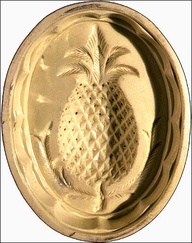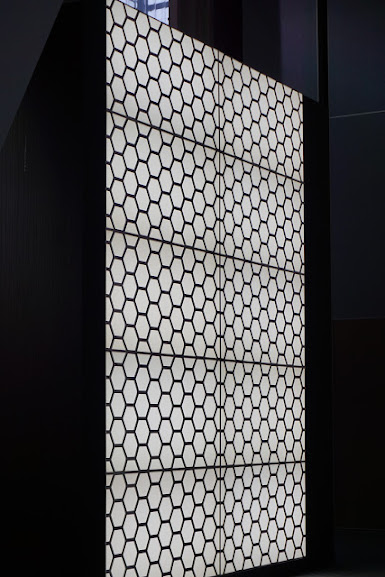Friday's Why In Interior Design Series: Part I - the pineapple, a symbol of hospitality in design and architecture
the pineapple
in interior design
please note Nest by Tamara's new, "
Friday's Why in Design"
column for 2013
Friday's Why in Design"
column for 2013
We often love a detail or design element but are not quite sure the meaning or historical
reference. In addition to all the other "nesting" musing Tamara, the design sleuth, will bring you Friday posts dedicated to uncovering the history and meaning behind much in interior design.
Have you ever noticed the pineapple symbol on
many antique furniture and accessories, and even in the modern home today? The fruit is seen as a symbol of hospitality in homes throughout the United States. It is most prevalent in Southern homes, yet how ironic that an exotic fruit like the pineapple should be so widely seen in the South, and here is why...
Ananas
comosus is the
botanical name of the pineapple. The
fruit is native to South America, but the word did not appear in English until
1664. It is said that in 1493 Christopher Columbus discovered the pineapple on the
island of Guadeloupe. He named it “pine of the Indians” or pina de
Indes. First president George Washington tasted the
pineapple in Bardados in 1751 and proclaimed it his favorite fruit. Commercial cultivation to the US did not
begin until the 1800s when steamships started transporting the fruit overseas.
pineapple fabric credit: deGournay.com
The resemblance to the pine cone may explain part of the initial infatuation with the exotic fruit. The pineapple looks like the very popular pine cone, which had been used as far back by the Romans on monuments and important buildings. The pine cone has long symbolized power and confidence, fertility and grown, and the Romans were infatuated with pine cones.
antique majolica pottery with pineapple desigm
At first
the pineapple was a rare commodity in our country, but now it is a reminder of the
Colonial roots of our heritage. When the pineapple was first introduced it immediately became popular, however, it was difficult to grow and only after greenhouse methods were refined was it able to be produced in the States.
all photos not my own in this post are pinned and linked in my
I picked up some pineapple garden ornaments during our
trip to Maine last June.
Specifically
during the Colonial era, Southerners became infatuated with the fruit and it came
to be known universally as a welcome sign to guests. During the first days of our country's inception, the pineapple came to represent fertility and the growth of our agricultural importance as a nation, therefore when a host served the pineapple to guests it was the utmost compliment and generous form of hospitality. During this era, home owners created pineapple centerpieces to adorn their tables. It was considered extravagant to offer pineapple when entertaining, and became quite the delicacy, therefore serving the fruit and adorning the home and table became a way to show affluence and prestige. Architects in Europe and the
United States during the 18th Century began to embellish the image
in their work including commissioning artisans to carve the fruit into stone, wood
and other places prominently seen throughout the home/
a modern use of the pineapple motif
Printworks wallpaper
photograph source: janelle mcculloch library of design
Today, many historic churches, government
buildings and estates have the pineapple symbol in their architecture and façade. Most often the pineapple will appear in
entryways, doorways or the framework of a space. The fruit can be seen on many details
in the American home; from wallpaper and fabric motifs to carved and molded
onto garden ornaments, door knockers, tableware, furniture and accessories. It is has morphed from a status symbol to becoming widely recognized as an expression of “welcome” throughout the Southern states and
on the east coast with the intention of projecting
friendliness and hospitality, and all with the historical nod towards the journey we took
to emancipate and distinguish ourselves from England.
Happy Nesting XO
my vintage pineapple lamps in Gabby's Hermes-orange equestrian inspired bedroom
in our beach house.
I painted the lamps a shiny coat of white to go with the
all orange/brown/white color palette.





















